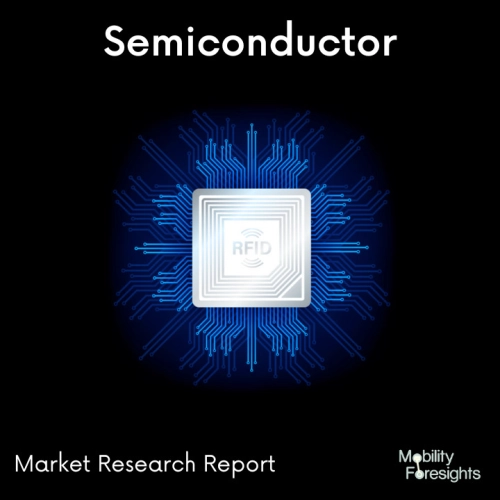
- Get in Touch with Us

Last Updated: Apr 25, 2025 | Study Period: 2024-2030
Nanoelectronics may benefit from the intriguing new material known as graphene because of its peculiar characteristics. At room temperature, the carriers exhibit quantum effects while moving freely and disregarding impurities-created obstacles. By advancing fabrication and characterisation methods based on those developed by Ponomarenko et al.
Graphene has a wide range of uses in the fields of composite materials, solar cells, super capacitors, electrodes, transistors, membranes, lithium ion batteries, thermoelectric materials, and future electrical and electronic equipment because of these intriguing features.

The Global Graphene-based nanoelectronics market accounted for $XX Billion in 2023 and is anticipated to reach $XX Billion by 2030, registering a CAGR of XX% from 2024 to 2030.
A brand-new nanoelectronics platform has been developed by De Heer and his associates using graphene, a single sheet of carbon atoms.
A need for any workable silicon substitute is that the technology be compatible with traditional microelectronics manufacturing. The strength of graphene comes from its flat, two-dimensional structure, which is kept together by the strongest chemical bonds known to science.
Graphene can be miniaturised far more than silicon, allowing for much smaller devices that operate at higher speeds and generate a lot less heat. This has been known since the beginning.
As a result, theoretically more devices can fit on a single chip of graphene than silicon. The researchers tweaked epi graphene and produced it on a silicon carbide crystal substrate to produce the novel nanoelectronics platform.
They created distinct silicon carbide chips using electronics-grade silicon carbide crystals in partnership with scientists at the Tianjin International Centre for Nanoparticles and Nanosystems at the University of Tianjin, China.
To create the graphene nanostructures and bond their edges to the silicon carbide chips, the researchers used electron beam lithography, a technique frequently employed in microelectronics.
The edges of the graphene are mechanically stabilised and sealed by this procedure because, in the absence of this, they would react with gases like oxygen and cause them to move charges down the edge in an unfavourable way.
| Sl no | Topic |
| 1 | Market Segmentation |
| 2 | Scope of the report |
| 3 | Abbreviations |
| 4 | Research Methodology |
| 5 | Executive Summary |
| 6 | Introduction |
| 7 | Insights from Industry stakeholders |
| 8 | Cost breakdown of Product by sub-components and average profit margin |
| 9 | Disruptive innovation in the Industry |
| 10 | Technology trends in the Industry |
| 11 | Consumer trends in the industry |
| 12 | Recent Production Milestones |
| 13 | Component Manufacturing in US, EU and China |
| 14 | COVID-19 impact on overall market |
| 15 | COVID-19 impact on Production of components |
| 16 | COVID-19 impact on Point of sale |
| 17 | Market Segmentation, Dynamics and Forecast by Geography, 2024-2030 |
| 18 | Market Segmentation, Dynamics and Forecast by Product Type, 2024-2030 |
| 19 | Market Segmentation, Dynamics and Forecast by Application, 2024-2030 |
| 20 | Market Segmentation, Dynamics and Forecast by End use, 2024-2030 |
| 21 | Product installation rate by OEM, 2023 |
| 22 | Incline/Decline in Average B-2-B selling price in past 5 years |
| 23 | Competition from substitute products |
| 24 | Gross margin and average profitability of suppliers |
| 25 | New product development in past 12 months |
| 26 | M&A in past 12 months |
| 27 | Growth strategy of leading players |
| 28 | Market share of vendors, 2023 |
| 29 | Company Profiles |
| 30 | Unmet needs and opportunity for new suppliers |
| 31 | Conclusion |
| 32 | Appendix |